Alapadatok
Év, oldalszám:2018, 7 oldal
Nyelv:angol
Letöltések száma:2
Feltöltve:2022. december 02.
Méret:949 KB
Intézmény:
-
Megjegyzés:
Csatolmány:-
Letöltés PDF-ben:Kérlek jelentkezz be!
Értékelések
Nincs még értékelés. Legyél Te az első!Tartalmi kivonat
724FM.1 ROSACEA TREATMENT PATHWAY Rosacea is a chronic relapsing disease of the facial skin. It is characterised by symptoms of facial flushing and a spectrum of clinical signs, including erythema, telangiectasia, coarseness of skin, and an inflammatory papulopustular eruption resembling acne. Epidemiological data are scarce and controversial; reported prevalence ranges from 0.09% to 22% Referral Criteria Refer routinely to Dermatology: Flushing, persistent erythema, telangiectasia, or phymatous rosacea that have not responded to treatments described in Table 2 or are causing psychological or social distress. Papulopustular rosacea that has not responded to at least 12 weeks’ of oral plus topical treatment. An uncertain diagnosis. Refer to an ophthalmologist: Urgently, if keratitis is suspected (eye pain, blurred vision, sensitivity to light, red eye). Routinely, if ocular symptoms are severe or resistant to maximal treatment in primary care. If patient does not
meet referral criteria, treat in primary care Assess the predominant symptoms and rule out acne vulgaris. Be aware that patients often experience more than one subtype concurrently. The treatment choice should be based on rosacea subtype and level of severity. Self-care advice Provide all patients with a Rosacea Lifestyle Patient Information Leaflet (see Patient Resources below): Provide reassurance about the benign nature of rosacea and uncommon progression to severe disease (especially in women). Recommend frequent application of high-factor sunscreen (minimum SPF 30) to the face whenever exposure to sunlight is likely. If flushing is problematic, advise avoidance of trigger factors. Possible triggers include extremes of weather (heat and cold winds), sunlight, strenuous exercise, stressful situations, spicy food, alcohol, and hot drinks. Some drugs can aggravate flushing (eg calcium-channel blockers) If the skin is dry, advise the use of skin-care
products as required (e.g hypoallergenic and noncomedogenic emollient creams) Avoid use of abrasive products or topical corticosteroids on the face. Patient Information resources NHS Choices Rosacea: https://www.nhsuk/conditions/rosacea/ British Association of Dermatologists Rosacea Patient Information updated Aug 2018 http://www.badorguk/shared/get-fileashx?id=229&itemtype=document Guideline 724FM.1 1 of 7 Uncontrolled if printed Table 1: Rosacea Subtypes Erythematotelangiectatic rosacea Flushing and persistent erythema of the central face; possible telangiectases; easily irritated facial skin. Burning and stinging may be reported. Oedema, roughness, or scaling may be present. Papulopustular rosacea Persistent erythema with transient papules and/or pustules of the central face. Burning and stinging may be reported. Ocular rosacea Watery or bloodshot appearance; foreign body sensation, burning or stinging, dryness, itching, light sensitivity, blurred vision,
telangiectases of lid margins; lid and periocular erythema; blepharitis, recurrent conjunctivitis, styes (chalazion, hordeolum); episcleritis, iritis; decreased visual acuity due to corneal complications (keratitis may occur). Skin thickening, irregular surface nodularities, and enlargement. Patulous follicles and telangiectases may occur. Rhinophyma is most common, but other affected locations may include the chin, forehead, cheeks and ears. Phymatous rosacea Guideline 724FM.1 2 of 7 Uncontrolled if printed Table 2: Treatment of Rosacea Flushing, erythema, telangiectasia 10, 11 1st line (green traffic light status) 2nd line (green traffic light status, use if 1st line ineffective, contra-indicated or not tolerated) Papulopustular rosacea (mild/moderate) Continue lifestyle changes throughout treatment and Propranolol PO 40 mg twice daily (unlicensed indication) Brimonidine tartrate gel 3 mg/g ¹ Metronidazole 0.75% cream Metronidazole 0.75%
gel ³ Azelaic acid 15% gel ³ Ivermectin 10 mg/g cream 4 Papulopustular rosacea (moderate/severe) and phymatous rosacea 5,6a, 6b,7 1st line: a tetracycline: Oxytetracycline PO 500 mg BD OR Lymecycline PO 408 mg OD (unlicensed indication) OR Doxycycline PO 100 mg OD (use in renal impairment) (photosensitivity) (unlicensed indication) 3rd line (use if 2nd line ineffective, contra-indicated or not tolerated. Clonidine has green traffic light status.) Guideline 724FM.1 Clonidine PO 50 micrograms twice daily (unlicensed indication) Camouflage cream ² Erythromycin PO 500 mg BD if intolerant of tetracyclines Consider adding topical treatment (see adjacent panel) Switching to an alternative oral antibiotic is not recommended Ocular rosacea Lid hygiene 8 Artificial tears 9 1st line: a tetracycline: Oxytetracycline PO 500 mg BD OR Lymecycline PO 408 mg OD (unlicensed indication) OR Doxycycline PO 100 mg OD (use in renal
impairment) (photosensitivity) (unlicensed indication) Erythromycin PO 500 mg BD if intolerant of tetracyclines Switch to the alternative topical preparation. Systemic antibiotics (see adjacent panel) 3 of 7 Uncontrolled if printed Notes 1. When persistent, constant, severe erythema is the predominant symptom and there is no prominent telangiectasia Brimonidine gel can also be used with metronidazole or azelaic acid gel in papulopustular rosacea: Apply metronidazole or azelaic acid after brimonidine gel has dried. 2. The charity ‘Changing Faces’ runs clinics at Amersham Hospital This is not an NHS service Details of Changing Faces can be found on their website. Camouflage creams are not funded by the NHS and patients pay for them 3. Topical metronidazole or azelaic acid can be used intermittently or continuously to control symptoms Metronidazole cream is more cost effective than metronidazole gel and is the preparation of choice. It is also the preferred choice for
sensitive skin. Metronidazole gel should be reserved for patients who have intolerance to metronidazole cream Azelaic acid may be more effective in those who do not have sensitive skin, but may cause transient stinging. 4. Ivermectin cream: Use one application daily for up to 4 months The treatment course may be repeated If no improvement after 3 months, discontinue. 5. All three oral tetracyclines are equal options Oxytetracycline is the only licensed oral antibiotic for rosacea Lymecycline (offlabel) or doxycycline (off-label) may be used as they are more effective, better tolerated and are taken as a single daily dose Lymecycline is better tolerated than doxycycline. Doxycycline may be used in renal impairment 6. a) For patients taking doxycycline: If good response achieved after first month, dose may be reduced to 50 mg once daily (offlabel) b) Initial treatment duration for all treatments for papulopustular rosacea: 3 months then review continued need. 7. Maintenance treatment –
up to a maximum of 6 months followed by a drug holiday Alternatively Step down from oral to topical treatment. 8. Eyelid hygiene: Apply a warm compress (clean flannel under hot water, wrung out and applied to lid for 1 minute) followed by cleansing with an over the counter lid cleaning solution or wipes. Refer to an ophthalmologist where necessary (see referral criteria). 9. Apply artificial tears (hypromellose 05% or carbomer 980 02%) liberally throughout the day into the eye Chloramphenicol 1% eye ointment may be applied after eyelid hygiene at night. (See guideline 371FM Ocular Lubricant Choice in the Treatment of Dysfunctional Tear Syndrome.) 10. Flushing, erythema/telangiectasia is a chronic condition which may burn itself out over several years Treatment is aimed at temporary symptomatic relief. PRN treatment is an option Daily dosing is also an option 11. Telangiectasia is treated with laser therapy This is not an NHS funded treatment (may only be treated for private patients)
Other less well evidenced alternatives usually prescribed in secondary care should be noted (see Table 3 for doses): Guideline 724FM.1 Other topical treatments, e.g benzoyl peroxide, other topical antibiotics, tacrolimus, or retinoids (eg isotretinoin) Other oral antibiotics, such as clarithromycin, azithromycin (useful if erythromycin is poorly tolerated), or minocycline. The combined oral contraceptive (COC) pill (if a hormonal cause is suspected in a woman). Oral isotretinoin. Oral spironolactone (only if the rosacea has a suspected/confirmed acneiform element). 4 of 7 Uncontrolled if printed Table 3: Prescribing Information Product Name Dose Apply once daily when facial erythema is present. Brimonidine gel may only be needed on days when people feel that their appearance is particularly important. Apply thinly, divide dose over forehead, chin, nose and cheeks, max. 1 g of gel per day Its use should be reviewed annually, including potential
withdrawal. Telangiectasia may be accentuated as general redness is reduced. Brimonidine gel is subject to two MHRA warnings: Brimonidine tartrate 3 mg/g gel o MHRA June 17: Risk of systemic cardiovascular effects: Counsel to avoid application to irritated or damaged skin, including after laser therapy in order to reduce the risk of systemic absorption leading to bradycardia, hypotension and dizziness. o MHRA Nov 16: Risk of exacerbation of rosacea: Counsel patients to initiate brimonidine with less than the max dose for at least 1 week, then increase gradually, based on tolerability and response. They should also be advised of the importance of not exceeding the maximum daily dose, stopping treatment and seeking medical advice if symptoms worsen during treatment. Apply a thin layer to the affected areas of the skin twice daily. Areas to be treated should be washed with a mild cleanser before application. Metronidazole 0.75% cream or gel The average period of treatment is 3 - 4
months, but can be continued for a further 3 - 4 months depending on the severity of the condition. Apply to the affected areas twice a day and rub in gently. Approximately 0.5 g = 25 cm (1 inch) of gel is sufficient for the Azelaic acid 15% cream entire facial area. Improvement becomes apparent after 4 weeks treatment. For optimum results, use over several months One application a day for up to 4 months. Ivermectin should be applied daily over the treatment course. The treatment course may be repeated. In case of no improvement after 3 months, the Ivermectin 10 mg/g cream treatment should be discontinued. No dosage adjustment is necessary in renal impairment; caution in patients with severe hepatic impairment. Tetracycline 500 mg PO twice daily Oxytetracycline 500 mg PO twice daily on an empty stomach Doxycycline 100 mg PO twice daily for 2 - 3 months then decrease to 50 mg daily Lymecycline 408 mg PO (one capsule) daily on an empty stomach Erythromycin 500 mg PO twice daily
Artificial tears As required taking patient preference into consideration. See guideline 371FM Ocular Lubricant Choice in the Treatment of Dysfunctional Tear Syndrome. Propranolol (unlicensed) 40 mg PO twice daily Guideline 724FM.1 5 of 7 Uncontrolled if printed Product Name Dose Clonidine (unlicensed) 50 micrograms PO twice daily Isotretinoin capsules (unlicensed) (hospital only – red) 25 mg PO daily increased gradually to a maximum of 100 mg PO twice daily 500 microgram to 1 mg/kg PO daily for 20 weeks. Alternatively, 10 to 20 mg PO daily. Benzoyl peroxide 5% gel Apply once daily, preferably after washing with soap and water Spironolactone^ Benzoyl peroxide/clindamycin 5%/1% (Duac Once Daily®) Tacrolimus 0.03% or 01% ointment (amber initiation) Apply once daily, preferably after washing with soap and water Apply sparingly once daily Isotretinoin 0.05% gel Apply once daily Azithromycin 500 mg PO once daily for two weeks (useful if erythromycin is poorly
tolerated) Clarithromycin 250 to 500 mg PO twice daily Minocycline m/r tablets (amber initiation) Combined oral contraceptive (COC) pill (ethinyloestradiol 30 micrograms + norethisterone or levonorgestrel) 100 mg PO once daily One tablet daily Acknowledgements This guideline has been adapted from the Dorset CCG Rosacea Primary Care Treatment Pathway November 2015. References Summary of Product Characteristics. Mirvaso 3 mg/g Gel Galderma (UK) Ltd Updated 7th July 2017 Accessed on 22nd March 2019 via www.medicinesorguk/emc Primary Care Dermatology Society – Rosacea. Accessed on 22nd Mar 2019 via http://www.pcdsorguk/clinical-guidance/rosacea DermNet NZ. Rosacea Accessed on 22nd March 2018 via http://dermnetnzorg/acne/rosaceahtml Hsu C, Lee Y. Carvedilol for the Treatment of Refractory Facial Flushing and Persistent Erythema of Rosacea. Arch Dermatol 2011; 147(11):1258-1260 National Institute for Health and Care Excellence. Facial erythema of rosacea: brimonidine tartrate gel.
Evidence Summary: New Medicine ESNM43 London: NICE; January 2013 Accessed on 22nd March 2019 via https://www.niceorguk/advice/esnm43/chapter/Key-points-from-the-evidence British Medical Association and Royal Pharmaceutical Society of Great Britain. British National Formulary. BMJ Group and RPS Publishing London; September 2014 Accessed on 22nd March 2019 via https://www.medicinescompletecom/mc/bnf/current/ MHRA/CHM advice: Brimonidine gel (Mirvaso®): Risk of systemic cardiovascular effects (June 2017) https://www.govuk/drug-safety-update/brimonidine-gel-mirvaso-risk-of-systemic-cardiovasculareffects-not-to-be-applied-to-damaged-skin MHRA/CHM advice: Brimonidine gel (Mirvaso®): Risk of exacerbation of rosacea (November 2016) https://www.govuk/drug-safety-update/brimonidine-gel-mirvaso-risk-of-exacerbation-of-rosacea ^ Wakelin S. Handbook of Systemic Drug Treatment in Dermatology 2015 NHS Scotland Dermatology Collaborative. Dermatology Patient Pathways Rosacea
http://www.dermatologynhsscot/dermatology-pathways/pathways/rosacea/ Guideline 724FM.1 6 of 7 Uncontrolled if printed See also: Guideline 161FM Minocycline for use in Dermatology - Amber Initiation Guideline 317 Dermatology (BHT users only) Guideline 371FM Ocular Lubricant Choice in the Treatment of Dysfunctional Tear Syndrome Guideline 820FM Treatment of Acne Vulgaris Algorithm Management of Infection Guidance for Primary Care Title of Guideline Guideline Number Version Effective Date Review Date Original Version Published Approvals Formulary Management Group Antimicrobial Stewardship Committee Medicines Management Subcommittee Clinical Guidelines Subgroup Author/s Rosacea Treatment Pathway 724FM 1 April 2019 April 2022 April 2019 th 6 December 2017 th 25 September 2018 (Chair’s action) th 14 June 2018 th 10 April 2019 Maire Stapleton, Formulary Manager (BHT) Consultant Dermatologists (BHT): Dr Amal Eissa, Dr Sophie Grabczynska, Dr Ravi Ratnavel Dr Shona Lockie,
Buckinghamshire CCG Breda Cronnolly, Medicines Optimisation/Interface Pharmacist, Buckinghamshire CCG Dermatology SDU(s)/Department(s) responsible for updating the guideline th Uploaded to the Intranet 18 April 2019 Buckinghamshire Healthcare NHS Trust/Buckinghamshire Clinical Commissioning Group Guideline 724FM.1 7 of 7 Uncontrolled if printed
meet referral criteria, treat in primary care Assess the predominant symptoms and rule out acne vulgaris. Be aware that patients often experience more than one subtype concurrently. The treatment choice should be based on rosacea subtype and level of severity. Self-care advice Provide all patients with a Rosacea Lifestyle Patient Information Leaflet (see Patient Resources below): Provide reassurance about the benign nature of rosacea and uncommon progression to severe disease (especially in women). Recommend frequent application of high-factor sunscreen (minimum SPF 30) to the face whenever exposure to sunlight is likely. If flushing is problematic, advise avoidance of trigger factors. Possible triggers include extremes of weather (heat and cold winds), sunlight, strenuous exercise, stressful situations, spicy food, alcohol, and hot drinks. Some drugs can aggravate flushing (eg calcium-channel blockers) If the skin is dry, advise the use of skin-care
products as required (e.g hypoallergenic and noncomedogenic emollient creams) Avoid use of abrasive products or topical corticosteroids on the face. Patient Information resources NHS Choices Rosacea: https://www.nhsuk/conditions/rosacea/ British Association of Dermatologists Rosacea Patient Information updated Aug 2018 http://www.badorguk/shared/get-fileashx?id=229&itemtype=document Guideline 724FM.1 1 of 7 Uncontrolled if printed Table 1: Rosacea Subtypes Erythematotelangiectatic rosacea Flushing and persistent erythema of the central face; possible telangiectases; easily irritated facial skin. Burning and stinging may be reported. Oedema, roughness, or scaling may be present. Papulopustular rosacea Persistent erythema with transient papules and/or pustules of the central face. Burning and stinging may be reported. Ocular rosacea Watery or bloodshot appearance; foreign body sensation, burning or stinging, dryness, itching, light sensitivity, blurred vision,
telangiectases of lid margins; lid and periocular erythema; blepharitis, recurrent conjunctivitis, styes (chalazion, hordeolum); episcleritis, iritis; decreased visual acuity due to corneal complications (keratitis may occur). Skin thickening, irregular surface nodularities, and enlargement. Patulous follicles and telangiectases may occur. Rhinophyma is most common, but other affected locations may include the chin, forehead, cheeks and ears. Phymatous rosacea Guideline 724FM.1 2 of 7 Uncontrolled if printed Table 2: Treatment of Rosacea Flushing, erythema, telangiectasia 10, 11 1st line (green traffic light status) 2nd line (green traffic light status, use if 1st line ineffective, contra-indicated or not tolerated) Papulopustular rosacea (mild/moderate) Continue lifestyle changes throughout treatment and Propranolol PO 40 mg twice daily (unlicensed indication) Brimonidine tartrate gel 3 mg/g ¹ Metronidazole 0.75% cream Metronidazole 0.75%
gel ³ Azelaic acid 15% gel ³ Ivermectin 10 mg/g cream 4 Papulopustular rosacea (moderate/severe) and phymatous rosacea 5,6a, 6b,7 1st line: a tetracycline: Oxytetracycline PO 500 mg BD OR Lymecycline PO 408 mg OD (unlicensed indication) OR Doxycycline PO 100 mg OD (use in renal impairment) (photosensitivity) (unlicensed indication) 3rd line (use if 2nd line ineffective, contra-indicated or not tolerated. Clonidine has green traffic light status.) Guideline 724FM.1 Clonidine PO 50 micrograms twice daily (unlicensed indication) Camouflage cream ² Erythromycin PO 500 mg BD if intolerant of tetracyclines Consider adding topical treatment (see adjacent panel) Switching to an alternative oral antibiotic is not recommended Ocular rosacea Lid hygiene 8 Artificial tears 9 1st line: a tetracycline: Oxytetracycline PO 500 mg BD OR Lymecycline PO 408 mg OD (unlicensed indication) OR Doxycycline PO 100 mg OD (use in renal
impairment) (photosensitivity) (unlicensed indication) Erythromycin PO 500 mg BD if intolerant of tetracyclines Switch to the alternative topical preparation. Systemic antibiotics (see adjacent panel) 3 of 7 Uncontrolled if printed Notes 1. When persistent, constant, severe erythema is the predominant symptom and there is no prominent telangiectasia Brimonidine gel can also be used with metronidazole or azelaic acid gel in papulopustular rosacea: Apply metronidazole or azelaic acid after brimonidine gel has dried. 2. The charity ‘Changing Faces’ runs clinics at Amersham Hospital This is not an NHS service Details of Changing Faces can be found on their website. Camouflage creams are not funded by the NHS and patients pay for them 3. Topical metronidazole or azelaic acid can be used intermittently or continuously to control symptoms Metronidazole cream is more cost effective than metronidazole gel and is the preparation of choice. It is also the preferred choice for
sensitive skin. Metronidazole gel should be reserved for patients who have intolerance to metronidazole cream Azelaic acid may be more effective in those who do not have sensitive skin, but may cause transient stinging. 4. Ivermectin cream: Use one application daily for up to 4 months The treatment course may be repeated If no improvement after 3 months, discontinue. 5. All three oral tetracyclines are equal options Oxytetracycline is the only licensed oral antibiotic for rosacea Lymecycline (offlabel) or doxycycline (off-label) may be used as they are more effective, better tolerated and are taken as a single daily dose Lymecycline is better tolerated than doxycycline. Doxycycline may be used in renal impairment 6. a) For patients taking doxycycline: If good response achieved after first month, dose may be reduced to 50 mg once daily (offlabel) b) Initial treatment duration for all treatments for papulopustular rosacea: 3 months then review continued need. 7. Maintenance treatment –
up to a maximum of 6 months followed by a drug holiday Alternatively Step down from oral to topical treatment. 8. Eyelid hygiene: Apply a warm compress (clean flannel under hot water, wrung out and applied to lid for 1 minute) followed by cleansing with an over the counter lid cleaning solution or wipes. Refer to an ophthalmologist where necessary (see referral criteria). 9. Apply artificial tears (hypromellose 05% or carbomer 980 02%) liberally throughout the day into the eye Chloramphenicol 1% eye ointment may be applied after eyelid hygiene at night. (See guideline 371FM Ocular Lubricant Choice in the Treatment of Dysfunctional Tear Syndrome.) 10. Flushing, erythema/telangiectasia is a chronic condition which may burn itself out over several years Treatment is aimed at temporary symptomatic relief. PRN treatment is an option Daily dosing is also an option 11. Telangiectasia is treated with laser therapy This is not an NHS funded treatment (may only be treated for private patients)
Other less well evidenced alternatives usually prescribed in secondary care should be noted (see Table 3 for doses): Guideline 724FM.1 Other topical treatments, e.g benzoyl peroxide, other topical antibiotics, tacrolimus, or retinoids (eg isotretinoin) Other oral antibiotics, such as clarithromycin, azithromycin (useful if erythromycin is poorly tolerated), or minocycline. The combined oral contraceptive (COC) pill (if a hormonal cause is suspected in a woman). Oral isotretinoin. Oral spironolactone (only if the rosacea has a suspected/confirmed acneiform element). 4 of 7 Uncontrolled if printed Table 3: Prescribing Information Product Name Dose Apply once daily when facial erythema is present. Brimonidine gel may only be needed on days when people feel that their appearance is particularly important. Apply thinly, divide dose over forehead, chin, nose and cheeks, max. 1 g of gel per day Its use should be reviewed annually, including potential
withdrawal. Telangiectasia may be accentuated as general redness is reduced. Brimonidine gel is subject to two MHRA warnings: Brimonidine tartrate 3 mg/g gel o MHRA June 17: Risk of systemic cardiovascular effects: Counsel to avoid application to irritated or damaged skin, including after laser therapy in order to reduce the risk of systemic absorption leading to bradycardia, hypotension and dizziness. o MHRA Nov 16: Risk of exacerbation of rosacea: Counsel patients to initiate brimonidine with less than the max dose for at least 1 week, then increase gradually, based on tolerability and response. They should also be advised of the importance of not exceeding the maximum daily dose, stopping treatment and seeking medical advice if symptoms worsen during treatment. Apply a thin layer to the affected areas of the skin twice daily. Areas to be treated should be washed with a mild cleanser before application. Metronidazole 0.75% cream or gel The average period of treatment is 3 - 4
months, but can be continued for a further 3 - 4 months depending on the severity of the condition. Apply to the affected areas twice a day and rub in gently. Approximately 0.5 g = 25 cm (1 inch) of gel is sufficient for the Azelaic acid 15% cream entire facial area. Improvement becomes apparent after 4 weeks treatment. For optimum results, use over several months One application a day for up to 4 months. Ivermectin should be applied daily over the treatment course. The treatment course may be repeated. In case of no improvement after 3 months, the Ivermectin 10 mg/g cream treatment should be discontinued. No dosage adjustment is necessary in renal impairment; caution in patients with severe hepatic impairment. Tetracycline 500 mg PO twice daily Oxytetracycline 500 mg PO twice daily on an empty stomach Doxycycline 100 mg PO twice daily for 2 - 3 months then decrease to 50 mg daily Lymecycline 408 mg PO (one capsule) daily on an empty stomach Erythromycin 500 mg PO twice daily
Artificial tears As required taking patient preference into consideration. See guideline 371FM Ocular Lubricant Choice in the Treatment of Dysfunctional Tear Syndrome. Propranolol (unlicensed) 40 mg PO twice daily Guideline 724FM.1 5 of 7 Uncontrolled if printed Product Name Dose Clonidine (unlicensed) 50 micrograms PO twice daily Isotretinoin capsules (unlicensed) (hospital only – red) 25 mg PO daily increased gradually to a maximum of 100 mg PO twice daily 500 microgram to 1 mg/kg PO daily for 20 weeks. Alternatively, 10 to 20 mg PO daily. Benzoyl peroxide 5% gel Apply once daily, preferably after washing with soap and water Spironolactone^ Benzoyl peroxide/clindamycin 5%/1% (Duac Once Daily®) Tacrolimus 0.03% or 01% ointment (amber initiation) Apply once daily, preferably after washing with soap and water Apply sparingly once daily Isotretinoin 0.05% gel Apply once daily Azithromycin 500 mg PO once daily for two weeks (useful if erythromycin is poorly
tolerated) Clarithromycin 250 to 500 mg PO twice daily Minocycline m/r tablets (amber initiation) Combined oral contraceptive (COC) pill (ethinyloestradiol 30 micrograms + norethisterone or levonorgestrel) 100 mg PO once daily One tablet daily Acknowledgements This guideline has been adapted from the Dorset CCG Rosacea Primary Care Treatment Pathway November 2015. References Summary of Product Characteristics. Mirvaso 3 mg/g Gel Galderma (UK) Ltd Updated 7th July 2017 Accessed on 22nd March 2019 via www.medicinesorguk/emc Primary Care Dermatology Society – Rosacea. Accessed on 22nd Mar 2019 via http://www.pcdsorguk/clinical-guidance/rosacea DermNet NZ. Rosacea Accessed on 22nd March 2018 via http://dermnetnzorg/acne/rosaceahtml Hsu C, Lee Y. Carvedilol for the Treatment of Refractory Facial Flushing and Persistent Erythema of Rosacea. Arch Dermatol 2011; 147(11):1258-1260 National Institute for Health and Care Excellence. Facial erythema of rosacea: brimonidine tartrate gel.
Evidence Summary: New Medicine ESNM43 London: NICE; January 2013 Accessed on 22nd March 2019 via https://www.niceorguk/advice/esnm43/chapter/Key-points-from-the-evidence British Medical Association and Royal Pharmaceutical Society of Great Britain. British National Formulary. BMJ Group and RPS Publishing London; September 2014 Accessed on 22nd March 2019 via https://www.medicinescompletecom/mc/bnf/current/ MHRA/CHM advice: Brimonidine gel (Mirvaso®): Risk of systemic cardiovascular effects (June 2017) https://www.govuk/drug-safety-update/brimonidine-gel-mirvaso-risk-of-systemic-cardiovasculareffects-not-to-be-applied-to-damaged-skin MHRA/CHM advice: Brimonidine gel (Mirvaso®): Risk of exacerbation of rosacea (November 2016) https://www.govuk/drug-safety-update/brimonidine-gel-mirvaso-risk-of-exacerbation-of-rosacea ^ Wakelin S. Handbook of Systemic Drug Treatment in Dermatology 2015 NHS Scotland Dermatology Collaborative. Dermatology Patient Pathways Rosacea
http://www.dermatologynhsscot/dermatology-pathways/pathways/rosacea/ Guideline 724FM.1 6 of 7 Uncontrolled if printed See also: Guideline 161FM Minocycline for use in Dermatology - Amber Initiation Guideline 317 Dermatology (BHT users only) Guideline 371FM Ocular Lubricant Choice in the Treatment of Dysfunctional Tear Syndrome Guideline 820FM Treatment of Acne Vulgaris Algorithm Management of Infection Guidance for Primary Care Title of Guideline Guideline Number Version Effective Date Review Date Original Version Published Approvals Formulary Management Group Antimicrobial Stewardship Committee Medicines Management Subcommittee Clinical Guidelines Subgroup Author/s Rosacea Treatment Pathway 724FM 1 April 2019 April 2022 April 2019 th 6 December 2017 th 25 September 2018 (Chair’s action) th 14 June 2018 th 10 April 2019 Maire Stapleton, Formulary Manager (BHT) Consultant Dermatologists (BHT): Dr Amal Eissa, Dr Sophie Grabczynska, Dr Ravi Ratnavel Dr Shona Lockie,
Buckinghamshire CCG Breda Cronnolly, Medicines Optimisation/Interface Pharmacist, Buckinghamshire CCG Dermatology SDU(s)/Department(s) responsible for updating the guideline th Uploaded to the Intranet 18 April 2019 Buckinghamshire Healthcare NHS Trust/Buckinghamshire Clinical Commissioning Group Guideline 724FM.1 7 of 7 Uncontrolled if printed
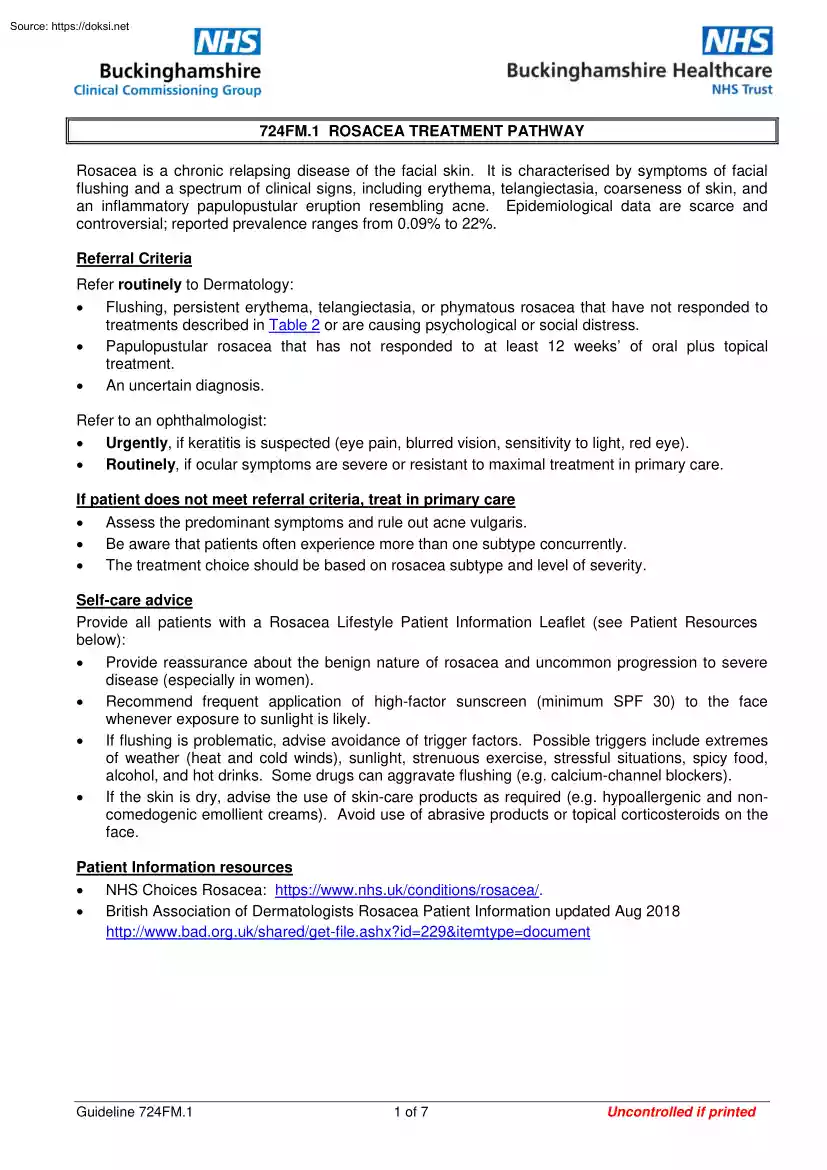
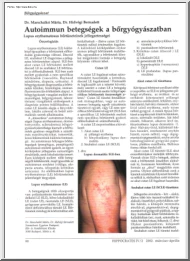
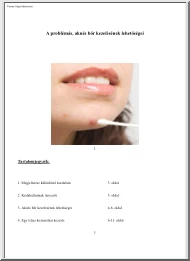
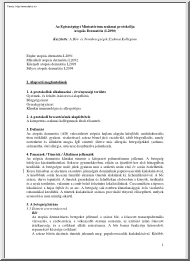
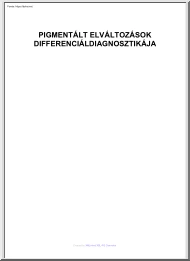
 Budapesten született, 1909. május 5-én. Eredeti neve Glatter Miklós. Születése anyjának és ikertestvérének az életébe került; 11 éves volt, amikor apja meghalt.Nagybátyja, Grosz Dezső gondoskodott róla, az ő kívánságára szerzett kereskedelmi érettségit 1927-ben, a csehországi Reichenberg (ma Liberec) textilipari szakiskolájában.Szerepelt a Jóság 1929 című
Budapesten született, 1909. május 5-én. Eredeti neve Glatter Miklós. Születése anyjának és ikertestvérének az életébe került; 11 éves volt, amikor apja meghalt.Nagybátyja, Grosz Dezső gondoskodott róla, az ő kívánságára szerzett kereskedelmi érettségit 1927-ben, a csehországi Reichenberg (ma Liberec) textilipari szakiskolájában.Szerepelt a Jóság 1929 című